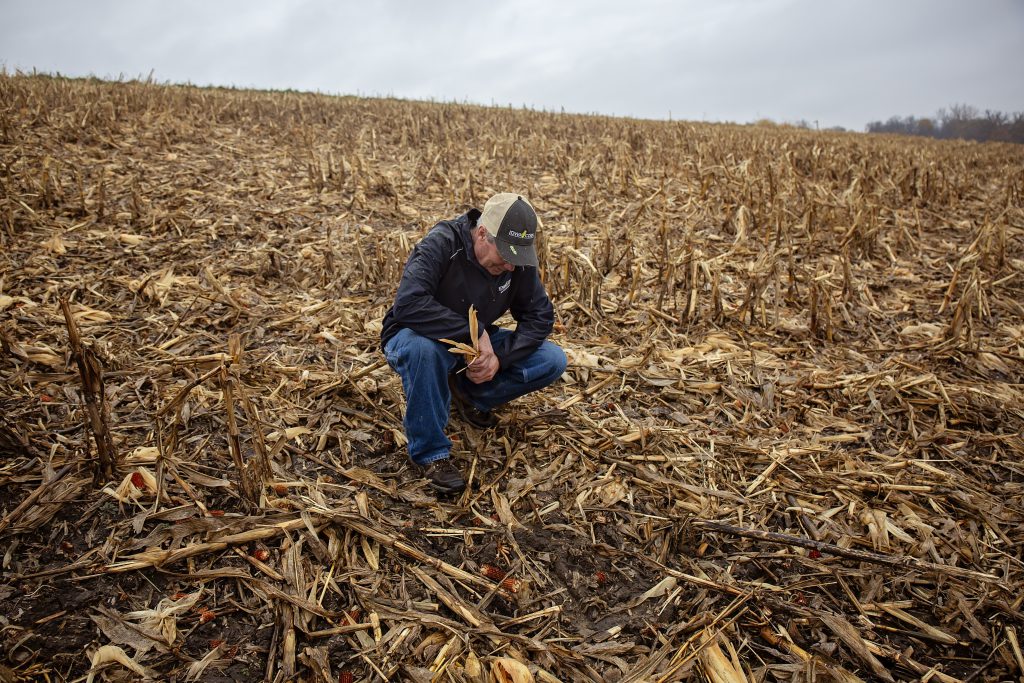Harrison and Monona County, Iowa, farmer Curt Mether was optimistic about corn and soybean yields throughout the growing season. As he watched the yield monitor, his high expectations were exceeded.
He is thankful Mother Nature wasn’t as harsh on his farms as in other areas of the state, but he attributed this year’s yield advantage to the two decades in a no-till system. “It seems like the first few years of no-till there wasn’t much yield advantage. But back then I was focused on controlling erosion,” he said.

Now he sees cumulative soil health benefits. “The advantages are obvious now. The soil handles the water so much better and plant health has improved even though we’re planting the same seeds,” he said. “It took a while to get the soil where it is today, but now the crops are reaping the benefits.”
Mether harvested his best soybean crop ever. “Last year was good, but this year was even better,” he said, noting one field with an average just shy of 90 bu. per acre.
Corn yields ranged from 220 bu. to 280 bu. per acre and averaged around 250 bu. per acre – about 10 bu. per acre better than last year. “We were able to get the crop planted in a timely manner in May because the terraces and waterways slowed the flow of the heavy spring rains,” he added.
Protecting the soil is important on the steep Loess Hills. “I inspected fields after heavy rains this spring and saw the proof that I’m doing the right things to keep this steep ground protected and productive,” he said.
Mether is disappointed the temperatures got too cool to plant cover crops this fall, but he’s going to research some options for the spring. Still, he’s pleased with the amount of crop residue from harvest that will help protect the soil this winter.
“I’m happy with this system. We no-till 100% of the ground in a corn and soybean rotation,” he said. “The terraces and waterways are also important structures that help me get into the fields to plant and harvest in a timely manner when the weather is less than ideal.”
Mether encourages farmers to add 4R Plus practices where they are needed. “I’m convinced tillage is hard on the soil and impacts crops the entire growing season,” he added. “The quickest way to improve soil structure is to stop heavy tillage. Once you start, you’ll wish you had started no-till sooner.”
Click here to ask Curt a question about his farming operation.
